Carbon Film Resistor: Basic to Advanced Applications
2024-09-02
2346
Catalog

Figure 1: Understanding Carbon Film Resistor
Introduction to Carbon Film Resistors
Carbon film resistors play an important role in electronic circuits. They are built around a ceramic rod, which is coated with a thin layer of pure carbon. This carbon layer is the primary element that controls the flow of electrical current. The manufacturing process involves precisely depositing the carbon onto the ceramic rod. Afterward, a helical cut is made in the carbon layer, which serves two main purposes: it increases the distance the electrons need to travel, and it narrows the carbon path. These changes allow for fine-tuning of the resistor’s resistance value.
The resistance in a carbon film resistor depends on several factors, including the length, width, and thickness of the carbon film. The helical cut creates a coil-like structure in the resistive element, which introduces a small amount of inductance. This inductance can influence the resistor’s performance in radio frequency (RF) circuits, sometimes leading to unwanted variability. In situations where minimizing inductance is useful, such as in RF applications, resistors without the helical cut are preferred because they exhibit very low self-induction.

Figure 2: Carbon Film Resistor Explained
Another important characteristic of carbon film resistors is their negative temperature coefficient, meaning their resistance decreases as temperature increases. This trait is useful for applications that require stability across varying temperatures. Additionally, carbon film resistors generate less noise compared to carbon composition resistors, which makes them particularly useful in precision electronics where low noise is a priority. The combination of adjustable resistance, low inductance, and stable thermal properties makes carbon film resistors well-suited for a wide range of sensitive electronic applications.
Manufacturing Carbon Film Resistors
Manufacturing carbon film resistors involves a highly controlled process that begins with ceramic rods being placed in a chamber where both temperature and pressure are carefully regulated. Hydrocarbon gases, typically methane or benzene, are heated to around 1000°C. At this elevated temperature, the gases decompose, causing carbon atoms to deposit onto the ceramic rods, creating a thin and uniform carbon film that forms the core of the resistor's functionality.
After the carbon film is applied, the next step is to attach metal end caps to the rods. These caps are useful because they establish electrical connections between the carbon film and the circuit where the resistor will be used. Following this, a helical cut is made into the carbon film. The helical cut is a precise operation, useful for fine-tuning the resistor’s electrical properties. By controlling the depth, angle, and pitch of this cut, the electrical path through the carbon film is lengthened, thereby adjusting the resistor's resistance to meet specific requirements.
Once the resistor's resistance is calibrated, the final step is to encapsulate the entire assembly in a protective resin. This resin coating is useful for several reasons: it shields the carbon film from physical damage during handling and installation, prevents contamination from environmental factors, and blocks moisture, which could otherwise alter the resistor’s performance. The resin encapsulation ensures that the resistors are durable and reliable, extending their operational lifespan.
Characteristics and Specifications of Carbon Film Resistors

Figure 3: Carbon Film Resistors
Carbon film resistors are known for their precision and dependability, offering specific attributes that meet a wide range of technical needs. Here's a detailed breakdown of their main features:
Tolerance Levels: Carbon film resistors come with tolerance options of ±2%, ±5%, ±10%, and ±20%. These different tolerance levels give engineers the flexibility to choose the right precision for various circuit designs, allowing for fine-tuning and optimization of electronic systems.
Resistance Range: These resistors are available in a wide range of resistance values, from less than 1 Ohm up to 10 Megohms. This broad range makes them versatile for numerous applications, whether they’re used as low-resistance grounding components or as high-resistance elements for voltage regulation.
Longevity: Carbon film resistors are remarkably stable, with typical resistance drift of only about 2% after 1000 hours of continuous use. This stability is useful for applications that demand long-term reliability without the need for frequent recalibration.
Noise Level: One of the standout features of these resistors is their exceptionally low noise level, averaging around 20 µV/V. This low noise is especially important for high-fidelity audio equipment and precision measurement instruments, where extraneous signals could otherwise compromise performance.
Temperature Response: The temperature coefficient of these resistors varies from ±200 ppm/°C to over ±1500 ppm/°C, indicating how their resistance changes with temperature fluctuations. This specification is useful for devices that operate in environments with varying temperatures, ensuring consistent and reliable performance.
Voltage Sensitivity: With a very low voltage coefficient of 0.0005%/V, carbon film resistors maintain stable resistance even when the voltage changes. This stability is important for circuits that need to perform reliably under different electrical loads.
Maximum Operating Temperature: These resistors are built to withstand temperatures up to 150°C, making them suitable for use in high-temperature environments like power supply units and industrial machinery.
The combination of these performance features and specifications makes carbon film resistors highly adaptable and reliable across a broad range of electronic applications. From consumer electronics to industrial systems, they ensure optimal functionality and long-lasting durability.
Applications of Carbon Film Resistors
Carbon film resistors are particularly effective in environments where high voltage and high temperature are common, making them useful in advanced electrical and electronic systems. These resistors can handle voltages up to 15 kV, which makes them useful for high-voltage power supplies where consistent performance under stress is required. Their ability to withstand temperatures up to 350°C makes them ideal for use in heat-intensive applications such as radar systems, x-ray equipment, and laser technologies.
Their durability and stable performance under extreme conditions underscore their importance in complex electronic systems. The robust nature of carbon film resistors ensures that they function reliably even in challenging situations, reducing the risk of system failures in professional and safety-useful applications. This reliability makes them a preferred choice for engineers and designers who need components that can meet the rigorous demands of modern high-tech projects. With their operational stability and capacity to perform under heavy electrical loads and harsh environmental conditions, carbon film resistors play a effective role in enabling innovations and advancements in a wide range of high-performance systems.
Advantages and Drawbacks
Carbon film resistors offer several advantages over carbon composition resistors, particularly in terms of temperature stability and noise reduction. Their design results in a lower temperature coefficient, meaning their resistance is less affected by temperature changes. This stability is useful for maintaining the accuracy of electronic devices in environments where temperatures fluctuate. Additionally, carbon film resistors generate much less noise than carbon composition resistors, making them ideal for audio equipment and sensitive measurement devices where maintaining signal clarity is useful.
However, when compared to metal film and metal oxide film resistors, carbon film resistors have some limitations. Metal-based resistors typically provide a broader range of resistance values and superior performance characteristics. These include higher tolerance levels and greater longevity, often without a considerable increase in cost. Due to these enhanced properties, metal film and metal oxide resistors are often preferred for applications that require high precision.
Even with these drawbacks, carbon film resistors are still widely used in the electronics industry because of their durability and reliable performance. They come in a wide range of resistance values and power ratings, from fractions of a watt to two watts, making them versatile enough to meet various circuit design requirements. Their robustness and cost-effectiveness make them a practical choice for many standard electronic applications, where a balance between performance and affordability is important.

Figure 4: Carbon Film Resistor- For Simple Gadgets to Complex Machinery
Conclusion
Carbon film resistors embody a blend of traditional reliability and modern precision, making them effective in the design of contemporary electronic devices. They balance performance with cost-efficiency, making them an attractive option for a wide range of applications that require both economic and technical considerations. Despite challenges from other resistor technologies that may offer wider resistance ranges or higher tolerance levels, carbon film resistors hold their ground due to their unique properties, such as lower noise levels and stability across variable temperatures. As electronic technologies evolve and demand more from their components, the role of carbon film resistors is likely to expand, reinforcing their importance in ensuring the durability and functionality of electronic systems. Their continued relevance underscores their adaptability and enduring value to engineers and designers across the electronics industry.
 ABOUT US
Customer satisfaction every time. Mutual trust and common interests.
ABOUT US
Customer satisfaction every time. Mutual trust and common interests.
function test. The highest cost-effective products and the best service is our eternal commitment.
Hot Article
- Are CR2032 and CR2016 Interchangeable
- MOSFET: Definition, Working Principle and Selection
- Relay Installation and Testing, Interpretation of Relay Wiring Diagrams
- CR2016 vs. CR2032 What’s the difference
- NPN vs. PNP: What's the Difference?
- esp32 vs stm32: which microcontroller is better for you?
- LM358 Dual Operational Amplifier Comprehensive Guide: Pinouts, Circuit Diagrams, Equivalents, Useful Examples
- CR2032 VS DL2032 VS CR2025 Comparison Guide
- Understanding the Differences ESP32 and ESP32-S3 Technical and Performance Analysis
- Detailed Analysis of RC Series Circuit
 Basics of Dipole Antennas: Types, Applications, Installation Tips
Basics of Dipole Antennas: Types, Applications, Installation Tips
2024-09-02
 Basic Principles of RF / Microwave Circulators / Isolators
Basic Principles of RF / Microwave Circulators / Isolators
2024-08-30
Frequently Asked Questions [FAQ]
1. What precautions should I take when installing carbon film resistors?
When installing carbon film resistors, it's useful to handle them with care to avoid damage. First, check the resistor's power rating and ensure it matches the requirements of your circuit to prevent overheating. When soldering, apply heat efficiently and briefly to prevent damage due to excessive heat exposure. Keep the leads of the resistors long enough for easy placement but trim any excess to avoid unintentional contact with other circuit components. Position the resistor away from high-heat components to maintain its integrity over time. Ensuring correct placement without physical stress, such as bending the leads sharply, will also prolong the lifespan and reliability of the resistor in the circuit.
2. How does the cost of carbon film resistors compare to other types of resistors?
Carbon film resistors are generally among the most cost-effective options available, making them a popular choice for bulk and budget-conscious applications. In comparison, metal film and metal oxide film resistors usually cost more due to their higher precision and stability. However, for applications that do not require the utmost precision or are not subjected to high-frequency or high-temperature conditions, carbon film resistors offer a financially sensible choice without a compromise in performance for general use.
3. What factors should I consider when choosing carbon film resistors for a project?
When selecting the right carbon film resistor, it's useful to ensure that the resistor meets the specific resistance value and tolerance required for your circuit to operate correctly. Also, choose a resistor with an appropriate power rating to prevent thermal degradation; this is particularly important in high-power applications which may require resistors with higher ratings. Since carbon film resistors exhibit a negative temperature coefficient, it's useful to consider how temperature fluctuations in your operating environment might impact the circuit's performance. Additionally, the physical size of the resistor should fit the available space on your circuit board. Finally, if your project involves harsh environmental conditions such as high humidity or exposure to chemicals, you might need to consider additional protective measures or opt for a different type of resistor better suited to withstand these conditions.
4. Can I replace a carbon film resistor with a metal film resistor?
Yes, you can replace a carbon film resistor with a metal film resistor in many cases. Metal film resistors generally offer better temperature stability, lower noise, and more precise tolerance, which can be beneficial for applications that require high accuracy and reliability. When replacing a resistor, ensure that the metal film resistor matches or exceeds the specifications of the original carbon film resistor in terms of resistance value, power rating, and tolerance. This swap is often straightforward but beneficial in enhancing circuit performance, especially in sensitive audio applications or precision measurement devices where minimal electrical noise and stable performance are required.
Hot Part Number
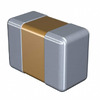 C1005X5R1E104K050BC
C1005X5R1E104K050BC VJ0402D220JXBAJ
VJ0402D220JXBAJ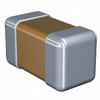 C0603C0G1E2R4B030BG
C0603C0G1E2R4B030BG GRM185R60J225KE26D
GRM185R60J225KE26D 06033A100J4T2A
06033A100J4T2A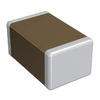 GRM2166P1H680JZ01D
GRM2166P1H680JZ01D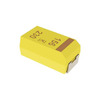 T495D686K020ZTE070
T495D686K020ZTE070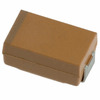 TBJD336K025LRSZ0024
TBJD336K025LRSZ0024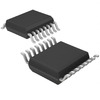 CY2308ZXI-1HT
CY2308ZXI-1HT VS-30BQ015-M3/9AT
VS-30BQ015-M3/9AT
- MT29F4G16ABBEAH4-IT:E
- MAX1775EEE
- IR11682SPBF
- DS4E-M-DC12V
- VI-J60-IW
- 6MBP75TBA060-50
- T491D475M050ZTAU00
- CD4072BM
- TPS659102A1RSLR
- FDMS86150
- AD5645RBRUZ
- PD55008-E
- T495X686M025ZTE130
- TPA3250D2DDWR
- SN74LVC1G386YZPR
- BQ24316DSGT
- ADP5070ACPZ-R7
- LTC3874EUFD#TRPBF
- ADC122S051CIMM/NOPB
- TS2431AILT
- TPS2060DGNR
- AD6857ABCZ
- IP4078CX6/LF
- LM101AW/883QS
- PL-2507C-LF
- S912ZVHY32VLQ
- SI4122-BTR
- SMI4029KCQ
- STA335MLJ13TR
- U6264BS2C07LL
- VT261BWFQR-ADJ
- S1L9224A01-Q0R0
- CY62167DV30LL55ZXI
- AM1D-0505DH30Z
- XC9536XL-10VQC
- MBM29F040A-12-X
- SPHE8104F-HL20V
- CY9AF156RAPMC-G-JNE2
- DS160PR410RNQR